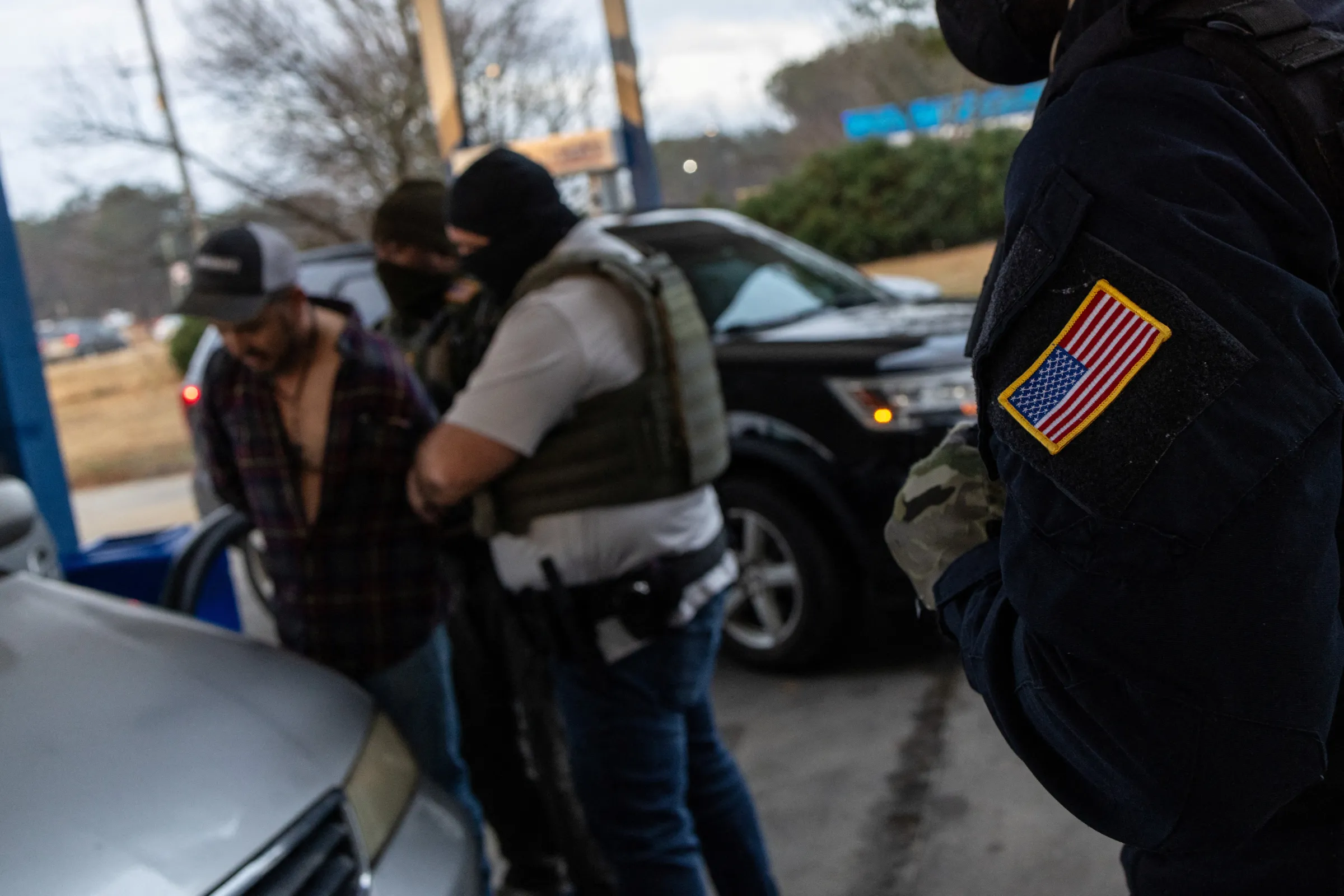Q&A: 'It's bleak, it's creepy' - U.S. tech expert

Security cameras monitor during a pro-Palestinian protest outside Columbia University, in New York City, U.S., September 03, 2024. REUTERS/Adam Gray
What’s the context?
Surveillance tech used by Trump administration to track and target political dissent can damage U.S. democracy, says privacy expert
- Surveillance tech targets dissenters and migrants
- Trump administration uses AI, monitors social media
- 'I spy' via facial recognition and geolocation data
MEXICO CITY - From federal workers to foreign students, the Trump administration is using surveillance tech to track and target critics of his agenda – creating a "chilling effect" on free speech, a privacy expert told Context.
The Trump administration has said it will begin screening the social media of immigrants and visa applicants for what it called anti-Semitic activity, which will serve as grounds to reject their immigration requests.
Elon Musk's Department of Government Efficiency DOGE is using artificial intelligence (AI) to scour federal workers’ communications for language that it considers hostile to President Donald Trump and his agenda, Reuters reported.
Context spoke to Albert Fox Cahn, executive director at the Surveillance Technology Oversight Project, a New-York based privacy and civil rights group, to discuss the impact of surveillance on activists in the United States.
What's the deal with state surveillance right now?
We see the Trump administration willing to radically weaponize immigration enforcement to target people for their political views, violating the fundamental guarantees of the First Amendment.
It's bleak, it's creepy, and we don't know the full scope of it. One of the alarming things about protest surveillance is that while it's very easy for government agencies to track the political activities of more people than ever before, that tracking often happens in secret.
How does it all go on in secret?
The United States has some of the most decentralized policing in the world.
We have more than 16,000 state and local law enforcement agencies across the country purchasing different surveillance technologies and deploying them on their own terms, oftentimes without any requirement to disclose that procurement to the public.
We see a handful of jurisdictions have enacted stronger safeguards, civilian-controlled police surveillance ordinances. But in most jurisdictions, police get to buy first and ask for permission later.

A man with three convictions for driving under the influence, is arrested by federal law enforcement agents led by U.S. Immigration and Customs Enforcement in Rex, south of Atlanta, Georgia, February 5, 2025. REUTERS/Carlos Barria
A man with three convictions for driving under the influence, is arrested by federal law enforcement agents led by U.S. Immigration and Customs Enforcement in Rex, south of Atlanta, Georgia, February 5, 2025. REUTERS/Carlos Barria
Can you talk us through some of the tech they favor?
There is a growing use of facial recognition to identify individuals, even facial recognition tools that can identify people while they're wearing a mask.
We see the use of geolocation data, including data both from cell phone providers and the third-party apps installed on so many of our smartphones.]
We see the abuse of new legal tools like geofence warrants, which allow police to identify every user of an app or service in a designated geographic area through a single court order.
We also see growing use of Wi-Fi surveillance and stingrays, so police can set up fake cell towers and Wi-Fi access points to trick people into connecting to these access points to reveal who they are and allow law enforcement to capture their information.
What is the human impact of this kind of surveillance?
I've been an activist since middle school, and I remember some chilling moments, like the days right after 9/11 or some of the low points of the first Trump administration.
I've never seen a moment when so many feared such harm for simply speaking their mind.
Even if there isn't another single deportation, even if there isn't another single arrest, the amount of protest surveillance that we have seen in recent months will do lasting damage to our political discourse and the integrity of our democracy.
When we instil fear in so many and silence so many, it really weakens the core of what a functioning democracy should look like.
Do you have any advice for people who still want to protest?
With privacy, it's often one size fits none.
Still, we can all take steps to reduce our digital footprint, whether it's wearing a face covering, leaving your cell phone at home, avoiding putting sensitive conversations in writing, switching over to encrypted messaging apps like Signal, enabling deleting messages, and minimizing what information you put on social media.
This interview has been edited for clarity and brevity.
(Reporting by Diana Baptista; Editing by Lyndsay Griffiths and Anastasia Moloney.)
Context is powered by the Thomson Reuters Foundation Newsroom.
Our Standards: Thomson Reuters Trust Principles
Tags
- Content moderation
- Tech regulation
- Data rights


















